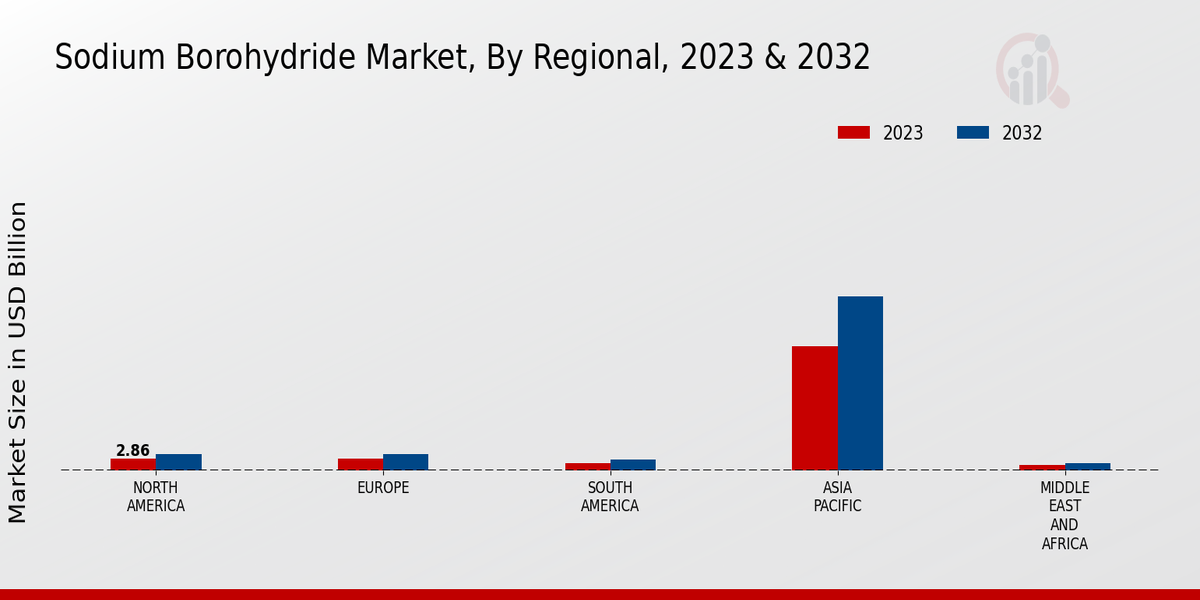Growth in Chemical Manufacturing
The Sodium Borohydride Market is significantly influenced by the expansion of the chemical manufacturing sector. Sodium borohydride is widely employed in various chemical processes, including the production of specialty chemicals and polymers. The chemical manufacturing industry has been witnessing a steady growth trajectory, with an estimated CAGR of around 4% anticipated in the coming years. This growth is expected to create a favorable environment for the sodium borohydride market, as manufacturers seek efficient and cost-effective reducing agents. Furthermore, the versatility of sodium borohydride in producing a range of chemicals, such as surfactants and dyes, positions it as a key player in the evolving landscape of chemical manufacturing, thereby enhancing its market presence.
Increasing Focus on Renewable Energy
The Sodium Borohydride Market is poised to benefit from the growing emphasis on renewable energy sources. Sodium borohydride is being explored as a potential hydrogen storage material, which is crucial for fuel cell technology and energy storage systems. As the world shifts towards sustainable energy solutions, the demand for efficient hydrogen storage methods is likely to rise. Reports suggest that the hydrogen storage market could reach USD 10 billion by 2027, indicating a substantial opportunity for sodium borohydride. This trend reflects a broader movement towards cleaner energy alternatives, positioning sodium borohydride as a vital component in the transition to renewable energy, thus driving its market growth.
Emerging Markets and Industrialization
The Sodium Borohydride Market is witnessing growth driven by industrialization in emerging markets. As countries in Asia and Latin America continue to develop their industrial sectors, the demand for sodium borohydride is expected to rise. This compound is essential in various applications, including metal reduction and chemical synthesis, which are critical in burgeoning industries such as electronics and automotive. The industrial growth in these regions is projected to contribute to a robust increase in sodium borohydride consumption. Furthermore, as these markets adopt more advanced manufacturing processes, the need for high-quality reducing agents like sodium borohydride becomes increasingly apparent, thereby fostering market growth.
Rising Demand in Pharmaceutical Applications
The Sodium Borohydride Market is experiencing a notable increase in demand due to its extensive applications in the pharmaceutical sector. Sodium borohydride is utilized as a reducing agent in the synthesis of various pharmaceutical compounds, including active pharmaceutical ingredients (APIs). The market for APIs has been projected to grow at a compound annual growth rate (CAGR) of approximately 6% over the next few years, which could further bolster the demand for sodium borohydride. Additionally, the increasing focus on drug development and the need for efficient synthesis methods are likely to drive the growth of the Sodium Borohydride Market. As pharmaceutical companies seek to enhance their production processes, sodium borohydride's role as a versatile reducing agent becomes increasingly critical.
Advancements in Wastewater Treatment Technologies
The Sodium Borohydride Market is also benefiting from advancements in wastewater treatment technologies. Sodium borohydride is utilized in the reduction of heavy metals and other contaminants in wastewater, making it an essential component in environmental remediation efforts. With increasing regulatory pressures to improve water quality and reduce pollution, the demand for effective wastewater treatment solutions is on the rise. The Sodium Borohydride is projected to grow at a CAGR of approximately 5% over the next few years, which could enhance the demand for sodium borohydride as a reducing agent. This trend underscores the importance of sodium borohydride in addressing environmental challenges, thereby contributing to its market expansion.


















Leave a Comment